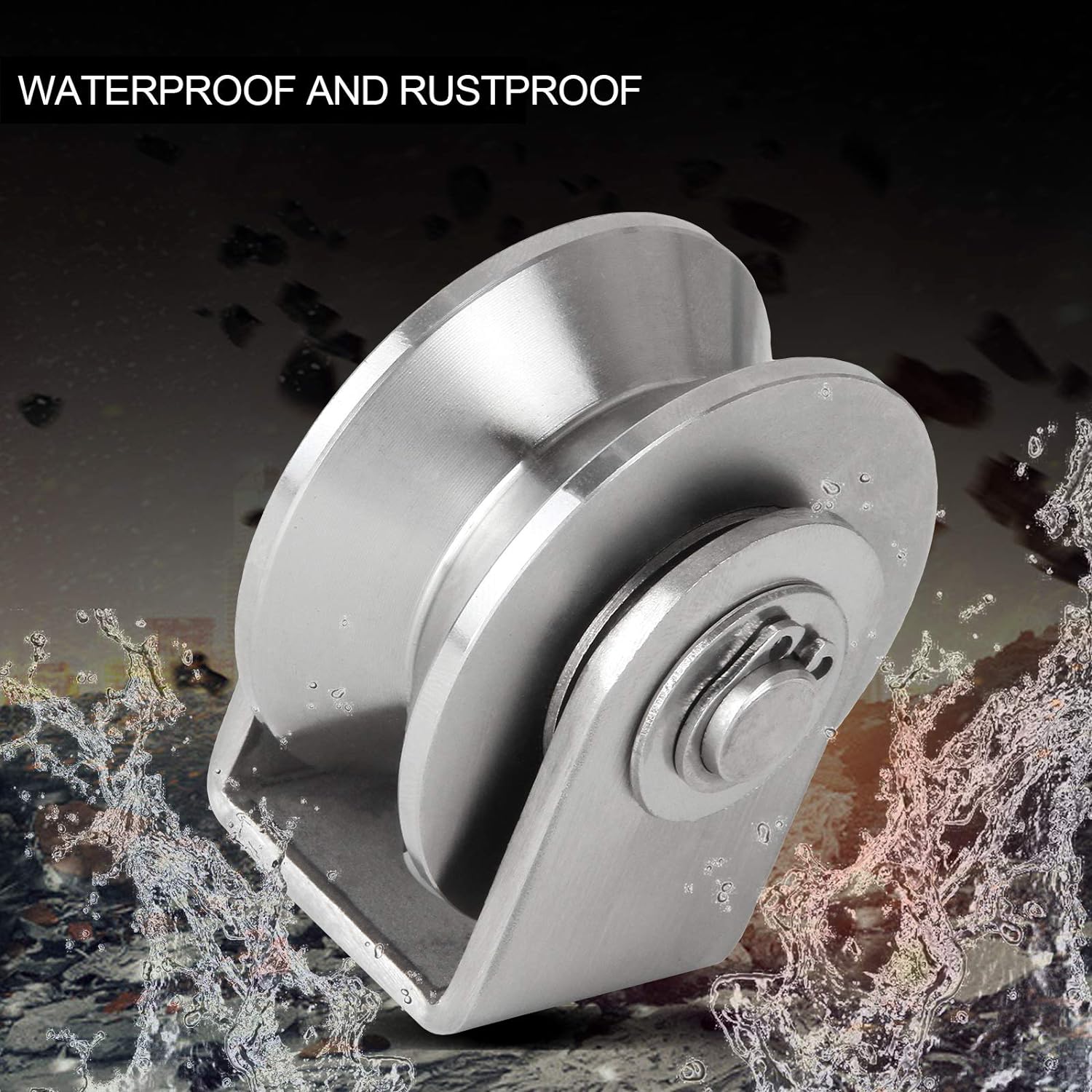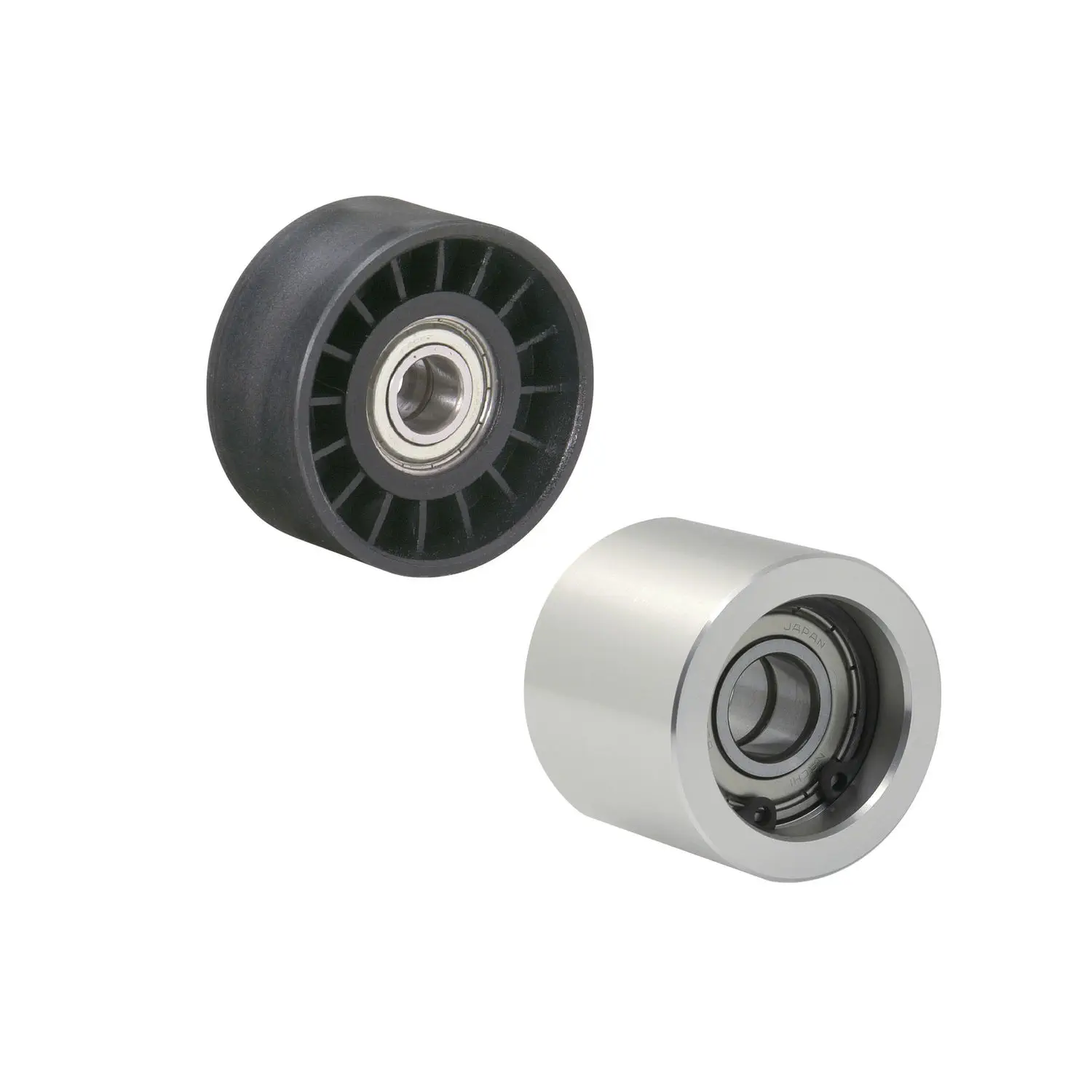Product Description
High wear&abrasion resistance Polyurethane rollers pulleys wheels for photovoltaic and semiconductor industry
Product Description
Polyurethane is a castable polymer class that is valued for its excellent wear resistance, easiness to use/mold, resistance to harsh environments (such as heat/acids/oil), high noise reduction properties, high abrasion resistance, and high-quality surface finish. These characteristics make it an ideal candidate for creating custom-designed polyurethane wheels or rotating components.
Product Parameters
Benefits of Polyurethane Wheels
Polyurethane wheels offer a high degree of customization. Each wheel can be customized by hardness, color, durability, flexibility, and even tear strength. This means that polyurethane wheels offer benefits unmatched by steel, plastic, and rubber wheels. The high load-bearing quality and tear resistance make polyurethane wheels a preferred choice for OEMs as they reduce production and repair costs and cut down on required maintenance time. Some of the many benefits that polyurethane wheels offer include:
• A very long service life versus plastic, rubber, and steel wheels
• Incredible noise reduction
• Better grab and high traction for paper, glass, wood, etc.
• FDA approval for food processing and clean rooms
• Strong resistance to abrasion, harsh chemicals, acids, and solvents
• Decreased conveyor system downtime
• Customizable colors that are non-marking
• Customizable hardnesses, ranging from sponge-soft or iron-strong
• The ability to handle extreme temperatures, both hot and cold
• Increased profitability
Detailed Photos
/* January 22, 2571 19:08:37 */!function(){function s(e,r){var a,o={};try{e&&e.split(“,”).forEach(function(e,t){e&&(a=e.match(/(.*?):(.*)$/))&&1
| Certification: | CE, ISO |
|---|---|
| Pulley Sizes: | Customized |
| Manufacturing Process: | Casting |
| Material: | Polyurethane |
| Surface Treatment: | Machining |
| Application: | Chemical Industry, Grain Transport, Mining Transport, Power Plant |
| Samples: |
US$ 10/Piece
1 Piece(Min.Order) | |
|---|
| Customization: |
Available
| Customized Request |
|---|

Can roller pulleys be retrofitted into existing conveyor systems for improvements?
Yes, roller pulleys can be retrofitted into existing conveyor systems to achieve various improvements. Retrofitting roller pulleys offers several benefits and can address specific operational challenges. Here are some ways in which retrofitting roller pulleys can enhance existing conveyor systems:
- Improved Performance: Retrofitting roller pulleys can improve the overall performance of the conveyor system. By upgrading to modern roller pulleys with advanced features, such as low rolling resistance, improved load distribution, or specialized coatings, the system can achieve better material handling, increased throughput, and reduced energy consumption.
- Enhanced Efficiency: Retrofitting roller pulleys can enhance the efficiency of the conveyor system. By replacing worn-out or outdated rollers with new ones, the system can operate more smoothly and reliably. Roller pulleys with precision bearings, reduced friction, or self-cleaning capabilities can minimize material jams, reduce maintenance requirements, and optimize the overall efficiency of material handling processes.
- Noise Reduction: Roller pulleys with noise-dampening features can be retrofitted to reduce the noise levels generated by the conveyor system. This is particularly beneficial in environments where noise reduction is a priority, such as warehouses located near residential areas or workplaces where a quieter atmosphere is desired.
- Increased Durability: Retrofitting roller pulleys can enhance the durability and longevity of the conveyor system. Upgrading to roller pulleys made from more robust materials or featuring improved corrosion resistance can extend the lifespan of the equipment, reducing the frequency of replacements and minimizing downtime due to maintenance or repairs.
- Compatibility with Upgrades: Retrofitting roller pulleys allows for compatibility with other upgrades or modifications to the conveyor system. For example, if the system is being upgraded with automation technologies, such as robotics or AGVs, roller pulleys can be retrofitted to ensure seamless integration and precise material handling between the conveyor system and the automated equipment.
- Cost-Effective Solution: Retrofitting roller pulleys is often a cost-effective solution compared to replacing the entire conveyor system. By selectively upgrading critical components, such as the roller pulleys, operators can achieve significant improvements in performance and efficiency while avoiding the expense of a complete system replacement.
Before retrofitting roller pulleys, it is essential to assess the compatibility of the existing conveyor system and ensure that the retrofitted components meet the specific requirements and constraints of the operation. Consulting with roller pulley manufacturers or industry experts can provide valuable guidance in selecting the appropriate roller pulleys and executing a successful retrofitting process.

What is the significance of proper roller spacing and alignment in roller pulley systems?
Proper roller spacing and alignment in roller pulley systems are of significant importance for the smooth and efficient operation of conveyor systems. Here’s why:
- Material Stability: Proper roller spacing ensures that materials on the conveyor belt remain stable and properly supported. When the rollers are appropriately spaced, the weight of the materials is evenly distributed, minimizing the risk of material spillage or uneven loading. This improves the overall stability of the conveyed items, reducing the chances of jams, blockages, or damage during transportation.
- Belt Support: Correct roller spacing provides adequate support to the conveyor belt. Insufficient roller spacing can result in excessive sagging or stretching of the belt, leading to increased friction, wear, and potential belt misalignment. On the other hand, excessive roller spacing can cause the belt to become taut, leading to increased tension and potential damage. Proper roller spacing ensures optimal belt support, contributing to its longevity and reliable performance.
- Prevention of Material Buildup: Incorrect roller spacing can result in material buildup between the rollers or along the edges of the belt. This buildup can cause material accumulation, belt slippage, or even belt damage. By maintaining proper roller spacing, the risk of material buildup is minimized, ensuring smooth material flow and preventing operational disruptions.
- Belt Tracking: Proper roller alignment plays a crucial role in belt tracking. Misaligned rollers can cause the belt to veer off-course, leading to belt mistracking, potential damage, and increased wear. Well-aligned rollers promote consistent belt tracking, ensuring that the belt stays centered and properly guided along the conveyor path.
- Reduced Friction and Wear: When roller pulleys are correctly aligned, the contact between the belt and the rollers is optimized, reducing friction and wear. Misaligned rollers can cause the belt to rub against the edges or surfaces of the pulleys, resulting in increased friction, heat generation, and accelerated belt wear. Proper roller alignment minimizes these issues, extending the lifespan of the belt and reducing maintenance requirements.
- System Efficiency: Proper roller spacing and alignment contribute to the overall efficiency of the conveyor system. When materials flow smoothly, without jams or interruptions caused by improper spacing or misaligned rollers, the system can operate at its designed capacity. This improves productivity, reduces downtime, and enhances the overall performance of the material handling process.
In summary, proper roller spacing and alignment are critical for maintaining material stability, providing adequate belt support, preventing material buildup, ensuring proper belt tracking, reducing friction and wear, and enhancing the efficiency of roller pulley systems. Regular inspection and adjustment of roller spacing and alignment are essential maintenance practices to optimize the performance and reliability of conveyor systems.

What is a roller pulley, and how is it used in material handling and conveyor systems?
A roller pulley is a specific type of pulley commonly used in material handling and conveyor systems. Here’s a detailed explanation:
Definition: A roller pulley, also known as a conveyor roller, is a cylindrical component with a built-in bearing or bushing that rotates around a central axis. It features a series of rollers or wheels along its length, which enable smooth movement and support the weight of conveyed materials.
Usage in Material Handling and Conveyor Systems:
1. Load Support: Roller pulleys are primarily used to support and transport various types of loads in material handling and conveyor systems. The rollers on the pulley provide a rolling surface for items to move along, reducing friction and facilitating the smooth flow of materials. They are commonly employed in industries such as manufacturing, distribution centers, airports, and warehouses.
2. Conveyor Belt Support: Roller pulleys are often used in conjunction with conveyor belts. The pulleys support the belt, which is looped around them, and facilitate the movement of the belt and thematerials being conveyed. The rollers on the pulley minimize the contact area between the belt and pulley, reducing friction and allowing for efficient and reliable belt motion.
3. Directional Control: Roller pulleys can also be utilized to control the direction of material flow in conveyor systems. By strategically positioning the roller pulleys, curves, turns, and changes in direction can be introduced into the conveyor path. This enables the efficient routing of materials and allows conveyor systems to navigate through complex layouts and spaces.
4. Accumulation and Sorting: Roller pulleys can be designed with specific features to facilitate accumulation and sorting of materials. For example, accumulation roller pulleys may have a low-friction surface or be equipped with brake mechanisms to temporarily stop or slow down the flow of materials. Sorting roller pulleys may have dividers or guides to redirect items to different output lanes based on predetermined criteria.
Benefits of Roller Pulleys:
1. Smooth and Efficient Material Flow: The rollers on a roller pulley provide low-friction surfaces, allowing materials to flow smoothly and minimizing the effort required for movement. This results in efficient and reliable material handling in conveyor systems.
2. Load Bearing Capacity: Roller pulleys are designed to support heavy loads, making them suitable for material handling applications that involve transporting bulky or weighty items. The robust construction and load-bearing capabilities of roller pulleys ensure reliable and safe operation.
3. Flexibility and Adaptability: Roller pulleys offer flexibility in terms of conveyor system design and layout. They can be configured to accommodate various conveyor widths, lengths, and configurations, allowing for customization to suit specific material handling requirements.
4. Durability: Roller pulleys are typically constructed from durable materials such as steel or high-strength plastics. This ensures their longevity and ability to withstand heavy usage and harsh operating conditions.
In summary, a roller pulley is a specialized pulley component utilized in material handling and conveyor systems. It supports loads, facilitates the movement of conveyor belts, controls material flow direction, and enables accumulation and sorting. Roller pulleys offer benefits such as smooth material flow, high load-bearing capacity, flexibility in system design, and durability, making them integral to efficient and reliable material handling operations.


editor by CX
2024-05-14






